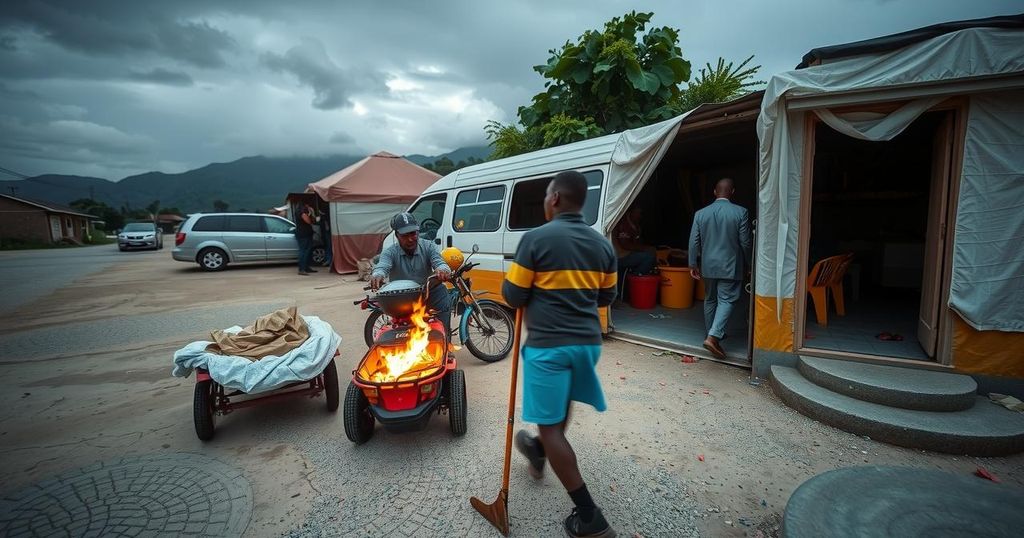Ethiopia Evacuates 80,000 Residents Amid Earthquake and Volcanic Eruption Fears
Ethiopia is evacuating around 80,000 people following a series of earthquakes, including a notable tremor of magnitude 5.8. Concerns about potential volcanic eruptions have arisen due to geological activity, prompting government intervention. Many buildings, particularly in Addis Ababa, are inadequately prepared for seismic events, raising urgent safety questions amid the ongoing crisis.
The Ethiopian government has commenced an evacuation of approximately 80,000 residents due to a series of earthquakes in the regions of Afar, Oromia, and Amhara. Since Friday, more than ten tremors have been recorded, prompting concerns about potential volcanic activity in the area. The most recent earthquake, which occurred on Saturday at 3:52 a.m., registered a magnitude of 5.8 and was felt in major cities, including Addis Ababa. Experts indicate that the repeated seismic activity signals an active volcanic region, necessitating decisive action by the government to ensure public safety.
The earthquakes have led to significant infrastructural concerns, especially in urban settings like Addis Ababa, where many buildings are reportedly not constructed to withstand such seismic events. Following the latest seismic events, emergency workers are actively assessing the damage and aiding in the safe relocation of affected residents, particularly those in high-risk areas. Local authorities are prioritizing the identification and evacuation of vulnerable populations amidst reports of property damage and persistent tremors that have affected daily life.
Ethiopia is experiencing a concerning pattern of seismic activity, particularly in the Afar, Oromia, and Amhara regions. Historical geological activity in these areas suggests a heightened risk of volcanic eruptions alongside earthquakes. The country last updated its building codes in 1983, leaving many structures inadequately equipped to handle such natural disasters. The government and experts are increasingly alarmed by the frequency and intensity of the earthquakes, which highlight potential shortcomings in infrastructure resilience.
In summary, Ethiopia is presently facing a critical situation with the potential for further seismic activity and volcanic eruptions. The government’s proactive measures to evacuate at-risk populations and evaluate damage are essential steps in safeguarding public safety. More significant attention to building practices is also necessary to mitigate future risks posed by earthquakes, thereby enhancing the resilience of urban infrastructure in Ethiopia.
Original Source: www.voanews.com




Post Comment